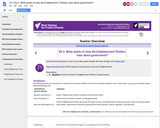
New Visions: Intro to Enlightenment
- Subject:
- History
- World History
- Material Type:
- Primary Source
- Provider:
- New Visions for Public Schools
- Date Added:
- 08/29/2018

New Visions: Intro to Enlightenment

Jennifer Connell was called the “Worst Aunt Ever” on Twitter after she sued her cousin’s son over a broken wrist. The story, full of misinformation and inaccuracies, went viral. This video and accompanying lesson plan helps students learn how to fact-check a sensational story using a technique called lateral reading.
This lesson is not under an open license; however it is provided free for educational services.
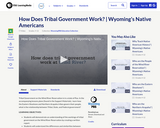
Tribal Government on the Wind River Reservation is in a state of flux. In the accompanying lessons plans (found in the Support Materials), learn how the Eastern Shoshone and Northern Arapaho tribes govern their people, what is the relationship between Tribal, State, and Federal government?
LEARNING OBJECTIVES:
Students will demonstrate an understanding of the workings of tribal government on the Wind River Reservation by creating a written report.
Students will understand the differences and similarities between state, tribal and federal governments and their functions, structures, and powers.
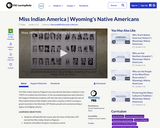
The Miss Indian America Pageant was launched by Sheridan residents in the 1950's to combat discrimination. In the accompanying lesson plan (found in the Support Materials) students will view the story told through the eyes of Miss Indian America title holders who held a reunion in 2013, serving as grand marshals in the Sheridan, WY Rodeo parade and commemorating a legacy of bridging cultures.
LEARNING OBJECTIVES:
Students will identify the reason why the town of Sheridan, WY started the Miss Indian America Pageant.
Students will define the given vocabulary words.
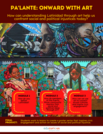
Students begin this unit by discussing their relationship with art, and the extent to which they believe art drives resistance movements. Students then participate in a Gallery Walk that highlights how members of the Puerto Rico community in the Young Lords used art to advance their ideas and preserve their culture. Students center the activism of Indigenous peoples in Puerto Rico by studying bomba music and murals. This helps them understand the roots of art—both visual and performance—as activism, and respond to the question: How can understanding Latinidad through art help us confront social and political injustices? Throughout this unit, students work in teams to create a poster series that inspires civic engagement and action on issues of social and political injustice.

In the first bend of this unit, students will closely read multiple perspectives on the “American Dream” in
order to collect information to use and integrate that information into an evidence-based perspective.
Students will examine primary and secondary source documents to make informed decisions about
what information to collect that may inspire their writing about “The American Dream.”
In the second bend of this unit, students will engage in a short-research process to create a draft of
argumentative speech on the “American Dream” with a specific purpose, audience, and tone in mind.
They will use their inquiry research questions from bend one to begin analyzing search results and citing
and gathering relevant, accurate, and credible information.
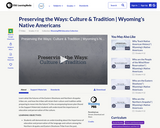
Learn what the futures of the Eastern Shoshone and Northern Arapaho tribes are, and how the tribes will retain their culture and tradition while preparing to move into the future? In the accompanying lesson plan (found in the Support Materials) students will understand the importance of education and perservation of the culture.
LEARNING OBJECTIVES:
Students will demonstrate an understanding about the importance of education and preservation of the language and culture among the Northern Arapaho and Eastern Shoshone Tribe from the past, present, and future.
Students will learn about the Federal Indian Policy to civilize Native Americans through the establishment of Native American Boarding Schools incorporating key vocabulary words.
Students will learn about how the practice of forced assimilation contributed to the diminished use of the Shoshone and Arapaho people’s lifestyle, languages, and traditions.
Students will discuss the development of Indian boarding schools in the United States and Wyoming.
Students will analyze the differences between the early educational experiences of the Native American and non-native students.
Students will examine the importance of education as a value that the Shoshone, Arapaho, and non-native communities share.
Students will consider how Native American students and non-native students can learn from each other to dispel the myths and stereotypes that exist in contemporary society.
Students will learn why oral traditions are important.
Students will understand why respect for elders is important in the tribe.
Students will gain an awareness of why traditional dancing and singing is important to traditions and culture.
Students will explore the significance of the buffalo to the Shoshone people living on the Wind River Reservation.
Students will learn that through traditional concepts of understanding, the Shoshone people, as well as many other Plains tribes, were able to survive through their sustenance on the buffalo.
Students will discuss the relationship that Native American people have with the buffalo (i.e., spiritual, sustenance, etc.) and how oral traditions play a critical role in the preservation of Native ways of knowing.

This document describes a series of lessons in the Social Sciences, all of which are tied to the exploration of the United Nations Universal Declaration of Human Rights (UDHR) as a Primary Source Document. They are designed to be given to 9th or 10th grade students in a World History, Cultural Geography, or similar social science class. They are specifically designed to teach the Common Core Standards for Literacy in the Social Sciences, and to engage higher order thinking skills.
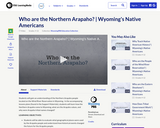
Students will gain an understanding of the Northern Arapaho people located on the Wind River Reservation in Wyoming. In the accompanying lessons plans (found in the Support Materials), students will learn how the Northern Arapaho come to Wyoming, what are the Arapaho values, and why were Arapaho tribal names changed?
LEARNING OBJECTIVES:
Students will be able to evaluate what geographical places were used by the Arapaho people and understand how historical events changed the future for the Arapaho people.
Students will compare and contrast between their social and ceremonial structures.
Students will understand the hierarchy of the Arapaho Tribe.
Students will analyze how their social and ceremonial structures contribute to their cultural identity.